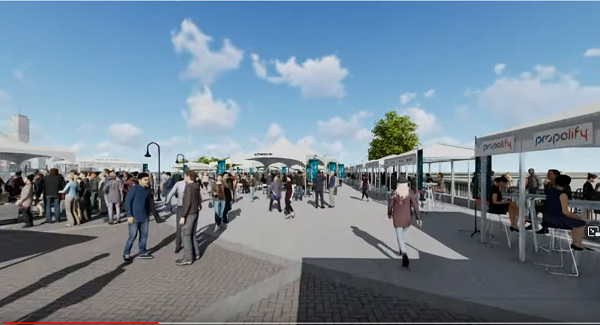Opinion: With Help from PSE&G, Electric Vehicle Adoption Is No-Brainer
Electric vehicle adoption isn’t one of the topics you’d regularly find at NJTechWeekly.com, but the volume of news about the proliferation of this technology makes it something worth talking about.
Simply stated, now’s the time for you early adopters in our audience to buy or lease electric vehicles, if you can find them and if you haven’t done so already. Utilities, private companies, the state government and the federal government are all stacking incentives, which means that they are providing subsidies for car purchases and for the installation of charging stations at home (including electrician bills); they’re also placing chargers in buildings, parking lots and garages, and along major NJ roadways. For commercial users and others (like educational institutions), they’ll even help with the bill for digging up the parking lot to bring the electricity from the transformer, so that the new charging technology will work.
As part of its Powering Progress vision, PSE&G is subsidizing the cost of installing electric-vehicle chargers in single-family homes, multifamily buildings, government facilities and publicly accessible parking lots. The program also defrays the costs of fast-charger installations along high-traffic corridors such as the New Jersey Turnpike and Garden State Parkway. And it gives back a little bit in the way of a rate reduction for those who install chargers.
NJTechWeekly.com spoke to Dawn Neville, manager of electric transportation at PSE&G, who is extremely committed to PSE&G’s pledge to contribute to a greener planet. She told us that she has 30 years of experience in environmental engineering, adding, “I cleaned up toxic waste for a living. So, to me, this is a really exciting way to help clean the air, lower carbon emissions. Even factoring in the emissions from electricity generation, it’s still 70 percent cleaner to drive an electric car than it is a combustion engine.
“What’s really exciting about our program is that it is designed to combine funds or stack funds, so that customers can take advantage of state funding, federal funding and then some utility funding in order to help promote electric transportation and conversion to and adoption of electric vehicles,” she said.
According to Neville, PSE&G also has a “Make Ready Program” underway with the other utilities in the state. “Make Ready references the work that it takes to get the electricity from the utilities grid all the way into your car — basically, into the vehicle. We can help customers with the cost of bringing the electricity, upgrading the service if needed and installing the infrastructure for the chargers,” she said.
“For our residential customers, that could be the cost of the licensed electrician coming into your home” to install a special receptacle. Electric vehicles use a “higher voltage plug,” she noted. “Maybe you want that over in your garage or over by your driveway. You might need an [electrical] panel upgrade.” Some homeowners will find that the panel “doesn’t handle as much power as you need to add the charger. We can reimburse the customer up to $1,500 for that electrician bill.”
In some cases, there might be an infrastructure cost. PSE&G might need to provide poles and transformers, “so we can help with up to $5,000 of that cost, and if PSE&G would have otherwise charged you a deposit to do this, with this program, we can offset some or all of that cost,” she said.
For commercial companies, PSEG can help them with the costs “of installing the chargers, and that can include digging up the parking lot with trenches and bringing the wires” out to the chargers. “They probably need a larger transformer for those Tesla Supercharger-type stations,” she added.
PSE&G is trying to ready 40,000 residential homes and 800 sites at commercial buildings, government facilities and multi-unit dwellings for chargers, as well as 300 more sites along the highways. “So, if you’re driving from Florida to New Jersey or from New York to California, we want you to be able to do that without worrying about running out of charge,” Neville said. “I can only help in New Jersey,” but PSE&G is working with other states to make sure there is continuity along the major highways, she added.
For more information, check out PSE&G’s Electric Vehicle Charging Program.




